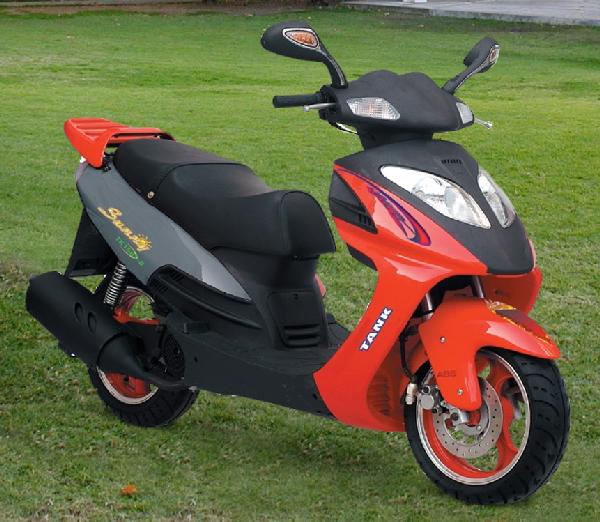Driving a Motorscooter
Site Map
What's New
Features
Scooters from Amazon.comYes Man, Scooters in Film
Larry Crowne and scootering
Helmet Free scootering
Scooters in a failing economy
Scooter Economy
Scooter ROI Analysis
Scooter pays for itself
Types of Motorscooters
Why ride a scooter?
Motorscooter FAQ
Buying Scooters Online
Join Our Mailing List
Recommend this site
Scooter Inspiration
Scooter EconomyMotorscooter Advantages
Motorscooter Disadvantages
Motorscooter Books
Motor Scooter Poetry
Business Scooter Travel
Motorscooter Posters
Motorscooters in California
Scooting in the UK
Green Scooting in China
Scooting in Italy
Motorscooters in Iraq
Motor Scooter History
The Ice-Cream Scooter
Pets and Motorscooters
RVs and Motorscooters
Gas vs. Electric Scooters?
Put-putting Pleasures
Recommended Scooters
Scooter Culture
Larry Crowne (film)
Dating and Scooter Culture
Motorscooter Freedom
Motor Scooter Image
Scooter Lib
Back to School on a scooter
Motor Scooter Music
Motorscooter Camping
Types of Motorscooters
Classic Motor ScootersItalian Motor Scooters
The Vespa Motorscooter
The Aprilia Motorscooter
Falcon Electric Scooters
50cc Motorscooters
Kymco Motorscooters
GT Chaunl Scooters
Chinese Motor Scooters
TANK Motorscooters
The RoadRunner Scooter
Roketa Motorscooters
The I-scooter
Moped Scooters
Mopeds
Scooter Choices
Best Scooter DealsThe Performance Scooter
The Luxury Scooter
The Minimalist Scooter
The Classic Scooter
The Basic Scooter
The I-scooter
The Electric Scooter
Stand-up Scooters
The Mobility Scooter
Used Motorscooters
California Legal Scooters
Toy Scooters
Practical matters
Trouble starting a scooterScooters and the Environment
Scooter Return On Investment Analysis
Motor Scooter Repair
The Scooter Commute
Scooter Repair Shops
Scooter Replacement Parts
Vespa Repair
Scheduled Maintenance
Fuel Efficient Driving
Essential Scooterist Kit
Passengers on a Scooter
Motor Scooter parking
Using the Kick Starter
Motor Scooter Batteries
Motor Scooter Stands
Rotating a Scooter
Cargo Storage Issues
Chinese Scooter Alarms
Scooter Roadside Assistance
Affordable Insurance
Scootering in groups
Motorscooter safety
Motorscooter SafetyDriving a Motorscooter
MSF Manual: Your Scooter
Scooters and Potholes
Important, before you drive
Motorscooter Helmets
All-weather Scootering
The Oily Path of Safety
Motorscooter Journal
Motorscooter JournalOff-highway scooter routes
The Scooterdoc
Scooter Choice Ethics
India Shuns Scooters
Left-handed Motorscooters
Other Types of Scooters
Mobility ScootersScooter-inspired Vehicles
Electric Motorscooters
The Three-wheel Scooter

Vespa Service In
Southern California
The Simplest Possible Vehicle
Unlike earlier motorscooters of the fifties and sixties, the modern twist-and-go motorscooter really requires no practice to operate – beyond road sense, and an understanding of the balance required for a two-wheeled vehicle. After grasping the handlebars for steering, there are only two controls for handling the vehicle: brakes (one brake handle in either hand) and throttle (the rotating right handle). Nothing else. No pedals, no clutch, no gearshift, nothing.
Of course there are also the console controls for things like turn-signals (required in some states but not others), horn, lights, and electric starter. One more control is the shut-off, a kill switch for stopping the engine in an emergency. In the unlikely even that your throttle becomes stuck on, this is a life saver. It is worth your time to practice on all of the controls for a while without looking. All of these console controls are labeled with icons that are fairly understandable.
It does take some time to become really comfortable with the way the CVT (Continuously Variable Transmission) works (See stepless transmissions), but it's really very intuitive.
The modern scooter is easier to ride than a bicycle (no pedaling and no shifting) but uses exactly the same motor skills for braking. The only new feature to learn is the right-hand handlebar grip throttle – pull toward you to accelerate and the opposite to slow down.
For many, the days of bicycle riding are long past and banking and cornering may require some relearning and practice, particularly at the higher speeds of a motorscooter. Always be very careful to watch for slippery surfaces. Banking, which can be done safely at reasonably high speed on clean dry roads, can easily land one on the ground if the wheel hits a patch of oil, a bit of sand or gravel, or dry leaves or pine needles. See motorscooter safety.
We strongly recommend reading the Motorcycle Safety Foundation scooter safety manual: Your Scooter.
Bookmark this page to:
